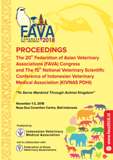AQ-11 Analysis Total Plate Count (TPC) Escherichia coli and Salmonella sp. on Frozen Beef Imported through Tanjung Priok Port
Abstract
Beef is the third most consumed protein in Indonesia after chicken and fish. Beef is the most important source of protein used widely in a variety of traditional dishes, such as “bakso” (meatball) and “rendang” (meat dish cooked with coconut milk). Fresh meat products are been marketed either as freshly cooled or frozen.
Foodborne pathogens such as bacteria or toxins, viruses or parasites may lead to human disease when contaminated food is eaten. The source of contamination may vary but harmful bacteria are mostly responsible for causing gastrointestinal infections. The sources could be the animal, the environment or contamination during food processing [1].
This study was carried out to evaluate the microbiological condition and status of frozen beef samples imported through Tanjung Priok port (Figure 1). The studied microbiological parameters were Total Plate Count (TPC), Escherichia coli, and Salmonella, to determine it’s risk for public health.
The amount of coliform bacteria in meat ex. E. coli is important. This microorganisms are very good indicators concerning whether the food has been processed in hygienic conditions. Salmonella bacteria is not exist in food. The Salmonella on meat can be emphasized to be spread by the animals whose intestine, skin are cut and because of the equipment used in cutting and the unhygienic and careless working [4].

